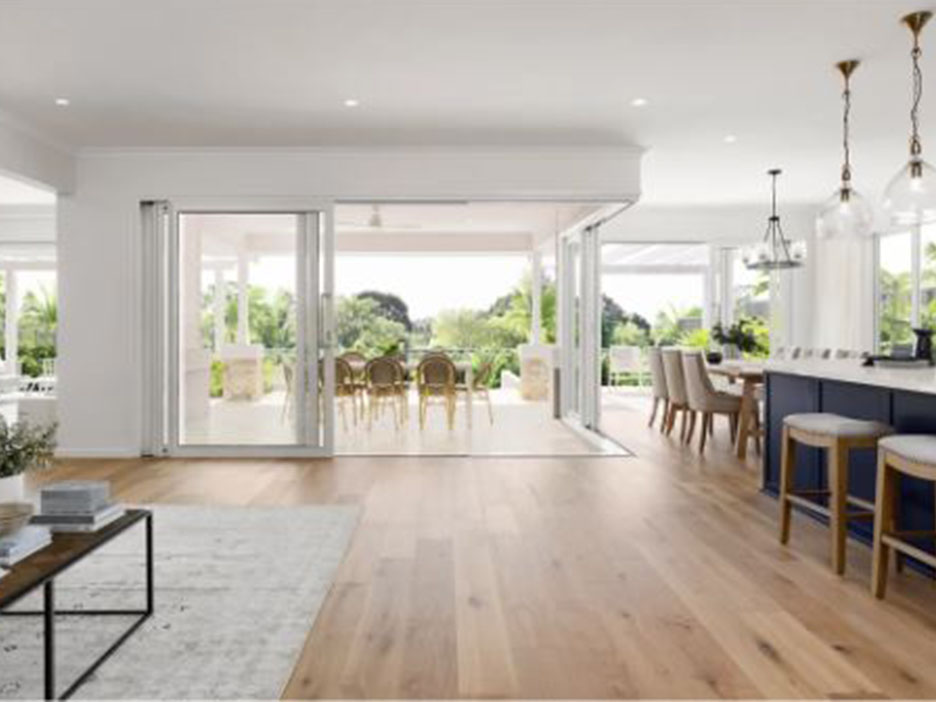Open-concept living has become a hallmark of modern design, celebrated for its ability to create spacious, flexible, and inviting interiors. By eliminating walls and barriers, this design approach unifies living, dining, and kitchen areas into a cohesive space that promotes natural light, connectivity, and a sense of openness. However, designing an open-concept home requires careful planning to maintain functionality, comfort, and style. Here are key tips to make the most of your open-concept living space.
Define Zones Without Walls
While open-concept living removes physical boundaries, it’s essential to define distinct functional zones to ensure the space remains organized and practical. Use furniture arrangements to delineate areas naturally. For instance, a sectional sofa can frame the living room, while a dining table anchors the dining space. Rugs are another effective tool for visually separating areas without interrupting the flow. Incorporating shelving units or low consoles can also act as subtle dividers while maintaining openness.
Maintain a Cohesive Design Theme
An open-concept space benefits from a cohesive design scheme that ties all areas together. Select a consistent color palette, materials, and finishes to create harmony. For example, if your kitchen cabinets are a warm wood tone, consider echoing that tone in your living room furniture or dining chairs. Avoid overloading the space with conflicting patterns or styles, as this can make the room feel disjointed. However, incorporating a few unique accents in each zone adds personality and prevents monotony.
Focus on Lighting Layers
Lighting plays a pivotal role in open-concept living spaces, as it needs to balance the openness while catering to the needs of different zones. Use a combination of ambient, task, and accent lighting to achieve functionality and ambiance. Pendant lights over the dining table or kitchen island can create focal points, while recessed lighting or track lights provide even illumination. Floor lamps and table lamps in the living area add warmth and coziness. Dimmer switches are an excellent addition, allowing you to adjust lighting levels based on the mood or activity.
Optimize Furniture Placement
Furniture placement is crucial in open-concept spaces to ensure flow and functionality. Avoid pushing furniture against the walls, as this can create a cavernous, uninviting feel. Instead, float furniture to encourage conversation and interaction. Arrange seating to face a central focal point, such as a fireplace, TV, or large window with a view. Use multifunctional furniture, such as storage ottomans or extendable dining tables, to maximize the versatility of the space.
Incorporate Vertical Elements
In an open-concept home, vertical design elements can help define spaces and add visual interest. Consider installing tall bookshelves, decorative screens, or architectural features like columns or beams to create subtle separations. These vertical additions provide depth and dimension without compromising the openness. Plants, especially tall ones like fiddle-leaf figs or bamboo, can also act as natural dividers while bringing in greenery and life.
Balance Privacy and Openness
While open-concept living is ideal for entertaining and fostering togetherness, some homeowners may miss the privacy and sound control of traditional layouts. To address this, consider incorporating flexible dividers, such as sliding barn doors, folding screens, or curtains, that can be drawn when needed. Additionally, strategic furniture placement or the use of acoustically friendly materials, like area rugs and upholstered furniture, can help minimize noise while maintaining a sense of openness.
Embrace Natural Light
One of the most significant advantages of open-concept living is the abundance of natural light it allows. Large windows, sliding glass doors, and skylights can flood the space with light, making it feel even larger and more inviting. Position mirrors strategically to reflect natural light and brighten darker corners. Choose window treatments that enhance the flow of light, such as sheer curtains or blinds that can be easily adjusted.
Pay Attention to Traffic Flow
Open-concept spaces must facilitate smooth movement between zones. Ensure that pathways remain clear and logical, allowing people to navigate the space effortlessly. Avoid overcrowding areas with furniture or decor, and leave adequate space around key fixtures like the dining table or kitchen island. Thoughtful planning of traffic flow not only improves functionality but also enhances the feeling of openness.
Integrate Storage Solutions
With fewer walls and traditional storage options, open-concept living can sometimes feel cluttered. Address this by integrating smart storage solutions. Built-in shelving, hidden cabinets, or multifunctional furniture with storage capabilities can help keep the space organized and tidy. Use baskets, trays, or decorative boxes to store small items while adding a touch of charm to your decor.
Open-concept living offers a contemporary, versatile way to design your home, providing the freedom to create a space that is both functional and aesthetically pleasing. By carefully defining zones, maintaining a cohesive design, and paying attention to furniture placement and lighting, you can achieve a harmonious balance of openness and intimacy. Whether hosting guests or enjoying quiet family time, an open-concept design enhances the sense of spaciousness and connection, making it an ideal choice for modern living.


